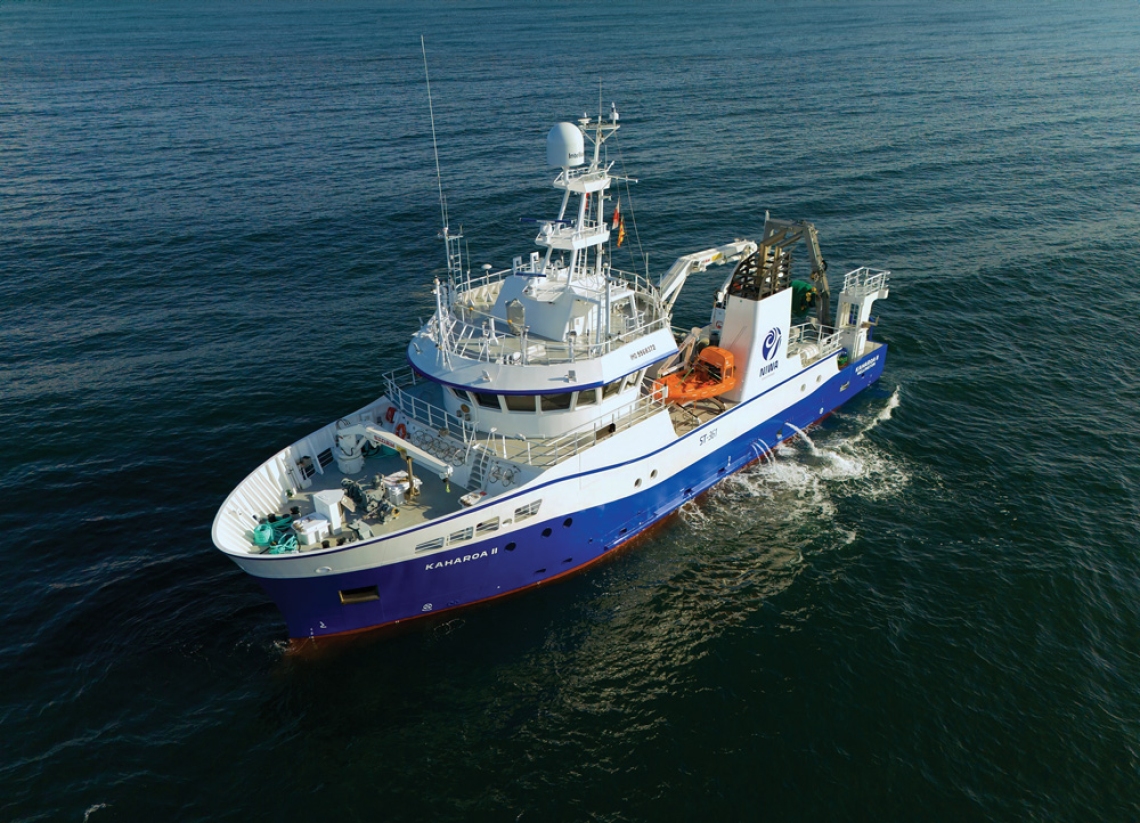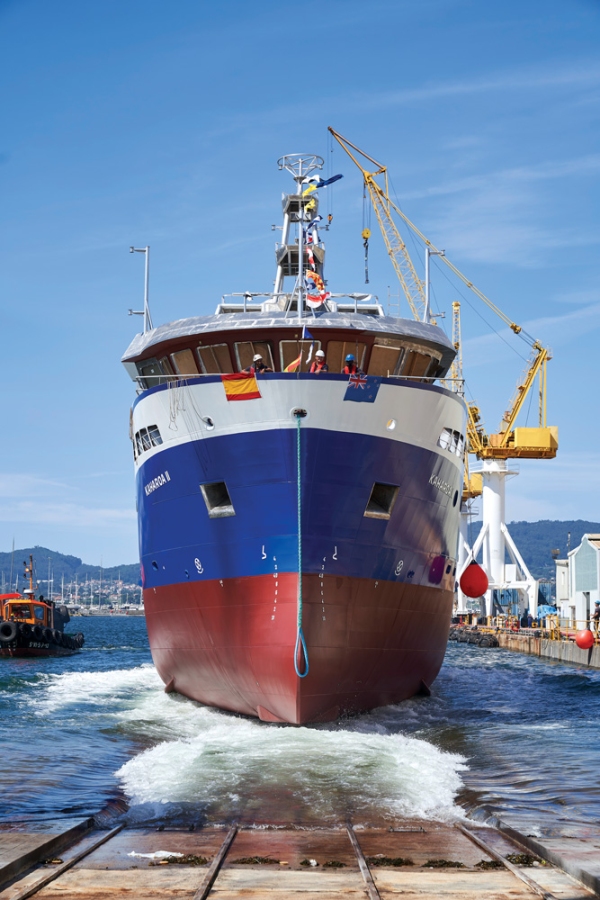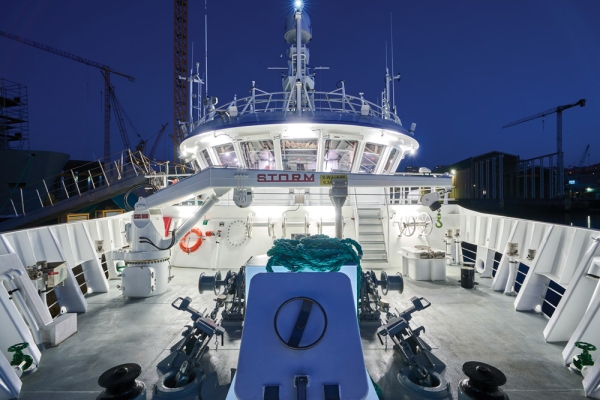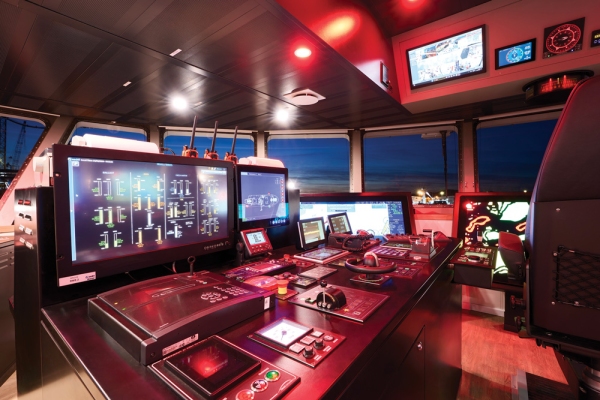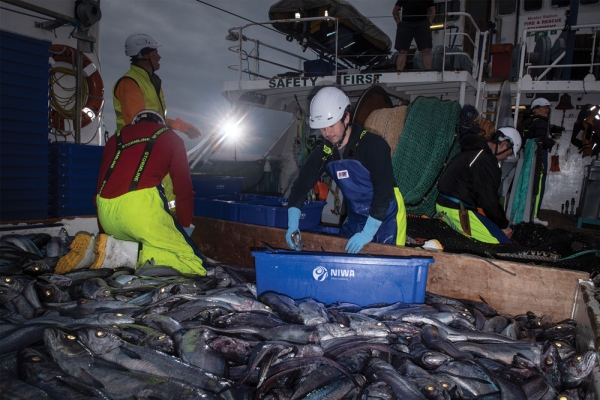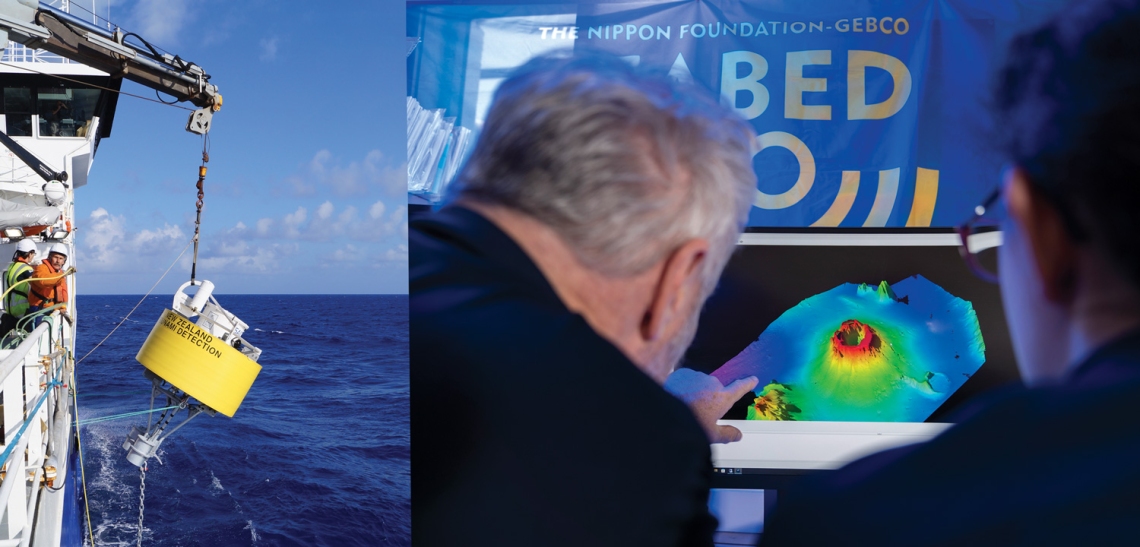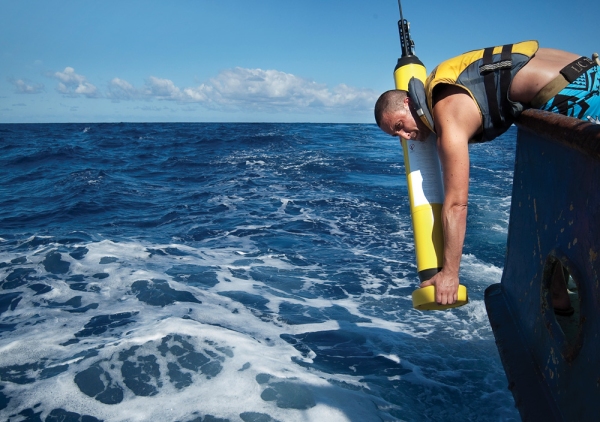Fresh from a Spanish shipyard and all set for her first full voyage at home, NIWA’s new research vessel Kaharoa II is ready to recharge New Zealand’s marine science capability.
Ryan Willoughby takes a look at the distinctively blue-hulled, high-tech research vessel that will significantly extend science on our seas.
More than 90% of New Zealand’s continental shelf is underwater. Stretching from the Chatham Rise across to the Challenger Plateau and from the Kermadec Islands down to the Campbell Plateau, it is a vast undersea realm covering more than 4 million square kilometres. Its complex subterranean geology harbours our greatest seismic threats, the temperature of its waters helps shape our changing weather, and its rich biodiversity sustains both our coastlines and our fisheries.
Understanding the opportunity and risks that this vast marine region presents is one of New Zealand science’s greatest challenges.
“Maintaining our ocean-going research capability is essential if New Zealand is going to sustainably manage our marine resources and maintain the health of our marine environment,” explains NIWA’s Deputy Chief Executive, Dr Rob Murdoch.
Cue RV Kaharoa II, NIWA’s latest ocean-going scientific research platform, which arrived in Wellinton this month after a three-month voyage from a Spanish shipyard.
NIWA owns and operates New Zealand’s only purpose-built, coastal and open-ocean, research vessels.
Weighing 2,500 tonnes and 70m long, RV Tangaroa is the largest. Ice-strengthened, Tangaroa can carry 44-person research teams, out across the Pacific and deep into the Southern Ocean, mapping the seabed, collecting fisheries data or recovering ocean samples from thousands of metres below the surface.
Affectionately known as “The Little Ship that Can”, Tangaroa’s smaller sister ship, the 28m RV Kaharoa, is also a veteran of countless research missions. However, at 44 years old, she has now reached the end of a life of science on the high seas.
Two hundred tonnes heavier and eight metres longer, the brand new Kaharoa II is more than capable of taking over Kaharoa’s research duties. With increased working deck and laboratory space, and kitted out with the latest marine research technology, Kaharoa II can carry more researchers and accomplish more science than its predecessor.
“Kaharoa II substantially advances our research capabilities – it opens the door to a vast array of new applications and horizons,” says Murdoch.
The new vessel is the result of six years of planning, from stakeholder engagement to detailed design, construction and launch.
NIWA's Manager – Marine Resources, Rob Christie, who’s been directing the project, acknowledges fitting the requirements of the scientists into a 36.1m vessel has been a big challenge.
“We needed to create a new multipurpose vessel under 500 tonnes that can still anticipate future demands of fisheries, oceanography and a variety of maritime commercial operations.”
Marine research technology is constantly evolving and, after talking to both clients and scientists, it fast became clear to Christie that NIWA needed a research platform with similar operating costs to the current vessel, but significantly enhanced capabilities.
“You can’t just order up a research vessel, ready for use. Imagine designing and building a new model of car from scratch – that’s effectively what we have done.”
The final brief settled on a 500 gross tonne vessel that could accommodate nine scientists, plus six crew, capable of operating at sea for up to 30 days or 6,500 nautical miles.
“It’s been a delicate balance between buoyancy, weight and space whilst maintaining seaworthiness. The scientific world has been looking on to see how small you can go and still keep a high level of research functionality,” says Christie.
Designed by the respected Norwegian naval architect Skipsteknisk, who also designed Tangaroa, Kaharoa II was built in Vigo, northern Spain, at the Astilleros Armon shipyard.
The close links between New Zealand, Spain and Norway have been instrumental in successfully delivering to the brief, according to Santiago Martin, Managing Director from Armon shipyard.
“By combining everybody’s expertise, we have created a floating laboratory that will advance our knowledge of the oceans and their ecosystems,” he says.
Science facilities have been upgraded, with larger laboratories and significantly increased deck space, and the whole vessel is fully data-networked, with separate science and operational systems.
Advanced acoustic technology for fisheries and deepwater seafloor surveys has also been installed, along with dynamic positioning capability and a roll tank to soften vessel motion.
NIWA Ship Technical Director, Greg Foothead, who helped supervise construction, says the crew on the maiden journey back to Wellington have been blown away by the sea-going capabilities and comfort of the new vessel.
“Being at sea for a 30-day stretch is hard, so getting the living and working areas right is important for crew and scientists alike,” says Foothead.
Comfort is important, but Kaharoa II’s primary benefit will be the sophisticated new technology and advanced capabilities she brings to marine science.
Whether it is physics, chemistry, biology, geology or climate research – she will boost the marine research needed to support a whole range of sectors and challenges.
Science, for example, is fundamental to the sustainable management of New Zealand’s $1.8 billion fishing industry, and Kaharoa II will likely spend an average of 130 days a year at sea on fisheries research voyages.
Much of this work centres on the long-running surveys monitoring the abundance and distribution of New Zealand’s most valuable fisheries, such as hoki, snapper and scampi.
Constructed to Silent DNV Acoustic and Fisheries classifications, Kaharoa II boasts a five-channel Kongsberg echosounder which will significantly boost acoustic research capabilities.
She also carries a larger wetlab and an additional fish measuring station, enabling more scientists working at sea to analyse more fish.
Stretching back more than 40 years, NIWA’s fish abundance surveys play a key role in helping Fisheries New Zealand set the commercial quotas required to ensure sustainable fisheries.
“Kaharoa II will not only allow us to continue Fisheries New Zealand research surveys, but we’ll be able to do more with the increased capability, including the new fibre-optic camera cable and multi-frequency acoustic sounder equipment,” says Chief Scientist – Fisheries, Dr Richard O’Driscoll.
The new vessel's first mission will be to head north to collect underwater imagery of seafloor biodiversity, habitats and fish in the Hauraki Gulf. This project, which revolves around the images captured by a new multi-camera video system, is only possible due to Kaharoa II’s additional capabilities.
“Kaharoa II will deliver critical science inputs into our fisheries science and management processes,” says Fisheries New Zealand’s Director Science & Information, Simon Lawrence.
A large range of other research programmes around New Zealand’s coast and out into the wider Pacific are also set to benefit from the arrival of Kaharoa II.
“Our vessels work as platforms for our science. With a broader range of inbuilt capacity and more flexible layout, Kaharoa II will transform what we are able to do,” says Chief Scientist – Oceans, Dr Mike Williams.
Take tsunami detection. Capable of carrying and managing larger loads and voyaging further than its predecessor, Kaharoa II will play a significant role in maintaining New Zealand’s deep ocean tsunami detection network.
Starting in the waters above the Hikurangi Trough off the east coast of New Zealand and running on into the Kermadec Trench and New Caledonia, 12 fourth-generation tsunami detection buoys underpin the multi-agency network that gives New Zealand and other Pacific nations early warning of possible tsunami.
Able to both deploy and recover these 4,000kg ocean monitoring sensors, Kaharoa II will soon be working on the maintenance programme for the 24/7 emergency monitoring network.
The improved Kongsberg multibeam echosounder unit will also boost mapping of the underwater geology of New Zealand and the wider Pacific region. A major beneficiary will be the Seabed 2030 Project, an ambitious international effort to map the ocean's seafloor within the next six years.
The vessel is fitted with a 10-tonne A-frame and supporting starboard 5-tonne T-frame, enabling research teams to deploy a much wider range of equipment, from high-tech submersibles to remotely operated underwater vessels, deep ocean landers and seabed samplers.
These extended operating capabilities mean Kaharoa II can independently load and offload scientific equipment or supplies in isolated Pacific Island destinations. This significantly broadens the range of roles and support NIWA can offer Pacific programmes.
“Ongoing access to such a marine research vessel is essential to deliver national research priorities and support our Pacific neighbours,” says Williams.
The name Kaharoa is indelibly linked with the global Argo ocean monitoring initiative (see below) and Kaharoa II has already begun work deploying Argo floats to extend this important international data-gathering network.
Another significant change is the ability to carry bigger research teams on the new vessel. This will enable scientists to operate day and night shifts, working 24/7 to deliver much more targeted and efficient research effort during their time at sea.
Marine ecologist Dr Mark Morrison, who has spent many days aboard its predecessor, is looking forward to getting aboard Kaharoa II.
“It will take a bit of time, adjusting to the new gear and working out how to deploy various equipment, to best take advantage of what it has to offer. But it is exciting times to be doing vessel-based research.
“There are survey trips that extend around New Zealand now booked up back-to-back, and the list of people wanting to get onboard is a nautical mile long.”
With its additional research capacity and extended range, it’s clear the distinctive blue hull of Kaharoa II is destined to become a familiar sight around the waters of New Zealand, and much further afield, in the years to come.
Gathering key ocean data
Argo is a global, ocean monitoring initiative deploying remote sensing floats to measure temperature and salinity throughout the world’s oceans.
Once deployed, the floats drift with ocean currents, sinking to 2,000m and then recording key oceanographic data from the water column as they rise back to the surface. These readings are transmitted to researchers via satellite, before the floats sink back down, repeating their 10-day cycle for up to 7 years.
The floats operate from the Arctic Ocean to the Ross Sea and the information gathered has played a key role in understanding ocean currents, temperatures and processes, as well determining the role oceans play in our weather and changing climate.
NIWA’s Kaharoa has crossed the Pacific and the Indian Oceans, deploying more than 2,220 Argo floats since 2001. It has deployed about one-third of the globe’s active Argo floats – far more than any other research vessel worldwide.
Kaharoa II has already picked up the Argo baton. On the maiden voyage back to Wellington, the crew have deployed 64 new floats in the Atlantic Ocean, and a further 88 in the Pacific. NIWA-deployed floats have now reached every ocean except the Arctic.

